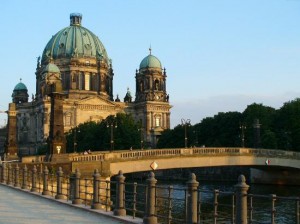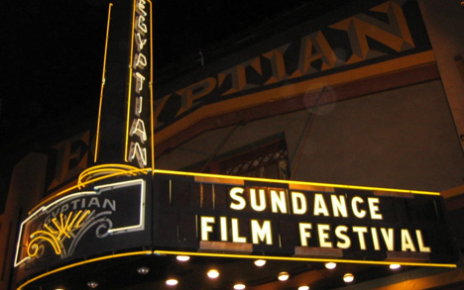The German capital has long been the spiritual home of the world’s backpackers, political misfits and disaffected youth. While its race towards gentrification has driven much of this activity out of the city centre its still easy to join in with the city’s unique bar culture and nightlife if you know where to look. Which is where this guide comes in! Far from the hustle and bustle of Mitte, the Brandenburg Gate and Potsdamer Platz you’ll find a world of artists’ studios, independent cafés and bars alongside Berlin’s legendary nightlife.

Arriving in Berlin
Berlin’s airport infrastructure is currently somewhat chaotic. Had everything gone to plan Berlin’s two airports: Tegel and Schönefeld would be closed, having been replaced by the brand new Brandenburg airport built next to the latter. Unfortunately, due to various issues, the airport is now 3 years behind schedule and won’t open until at least October 2013.
Cost conscious travelers will probably find themselves arriving at Schönefeld, in the old East Berlin, which is home to easyJet, Ryanair and a host of other low cost-carriers. Schönefeld is linked to the city’s central station (Hauptbahnhof) by a somewhat irregular S-Bahn train service in around 30 minutes. The airport is also handy for the ‘hipper’ areas of the city like Friedrichshain and Prenzlauer Berg.
If you’re arriving at Tegel (served by Lufthansa, Air Berlin, BA and United among others) the best way to town is via the dedicated TXL bus which takes around 30 minutes to reach Alexanderplatz in the city centre. Alternatively the Zoo is served by the X9 bus in around 20 minutes.
Where to Stay
If you’re planning to hit the clubs of Berlin then it makes sense to stay in the areas where the clubs are. There’s a great selection of apartments near Potsdamer Platz on Oh-Berlin which are ideal if you’re traveling in a group or looking to save money by self-catering. Alternatively the city’s legendary selection of youth hostels is also worth considering. Guests are much more demanding these days and many of them now come with free wifi, bars and video games.
Going Out
If you can make it to your accommodation in Berlin before about 11pm then there’s no sense in turning in for the night. In fact if you’re staying in one of the city’s nightlife hotspots you’ll find that the clubs aren’t even open yet!
Get your night underway with a visit to Roadrunner’s Paradise a slice of 1950s America in the old East Berlin. Situated next to a motorcycle repair shop this isn’t an easy find but is entirely worth the effort. Owing to the complex history of the city this isn’t nearly as inauthentic a concept as it sounds and the place is very popular with locals.

Suitably lubricated by the beer (and motorcycle oil) of America’s golden era it’s time to hit the clubs. Recommending a particular establishment is almost impossible as Berlin’s club scene is fiercely divided along musical taste lines and the cheesy night-spot playing inoffensive pop doesn’t really exist as a concept here. Check Time Out for more detailed recommendations but as a very basic recommendation dance and electronica heads should check out Klub der Republik whereas rock fans should consider Dunckel. These suggestions don’t even scratch the surface however so keep an eye on Facebook and other websites for news of pop-up parties.
If you’re still able to stand upright and walk in a (reasonably) straight line after your club visit then head over to Wohnzimmer for a slice of drunken intellectual conversation. It’s amazing how a few drinks can improve your ability to discuss the works of Chaucer or indeed speak German!
During the day
If that fierce debate over the philosophy of Kant has left you feeling a little fragile (it couldn’t possibly be the alcohol…) then why not attack the problem head on by taking in brunch at one of Berlin’s many breakfast cafés. Café 100 in Friedrichshain is something of an institution among local students and other hipsters and there’s no problem in lingering here with a laptop for a few hours.
Europe’s biggest department store KaDaWe in the city centre has become a destination in its own right but there is little here which you can’t get in any major department store in any other western city. If you stick to the small boutiques around Friedrichshain you’ll find a far better range of small boutiques selling clothes, records and second hand books. Fans of vintage clothing and indie designs should head to the Boxhanger Platz fleamarket (Flohmarkt am Boxhagener Platz) on a Sunday afternoon where students and local designers sell there wares at astoundingly low prices.

When to Visit
Berlin has a far more extreme climate than the United Kingdom and temperatures can range from around -15°C in January and February to 35°C in June and July. City breaks aren’t a lot of fun in the height of summer and a lot of the locals tend to disappear in July and August leaving the bars and clubs expensive and filled with tourists. If you can manage a weekend in April, May, August or September then that’s the time to visit.




